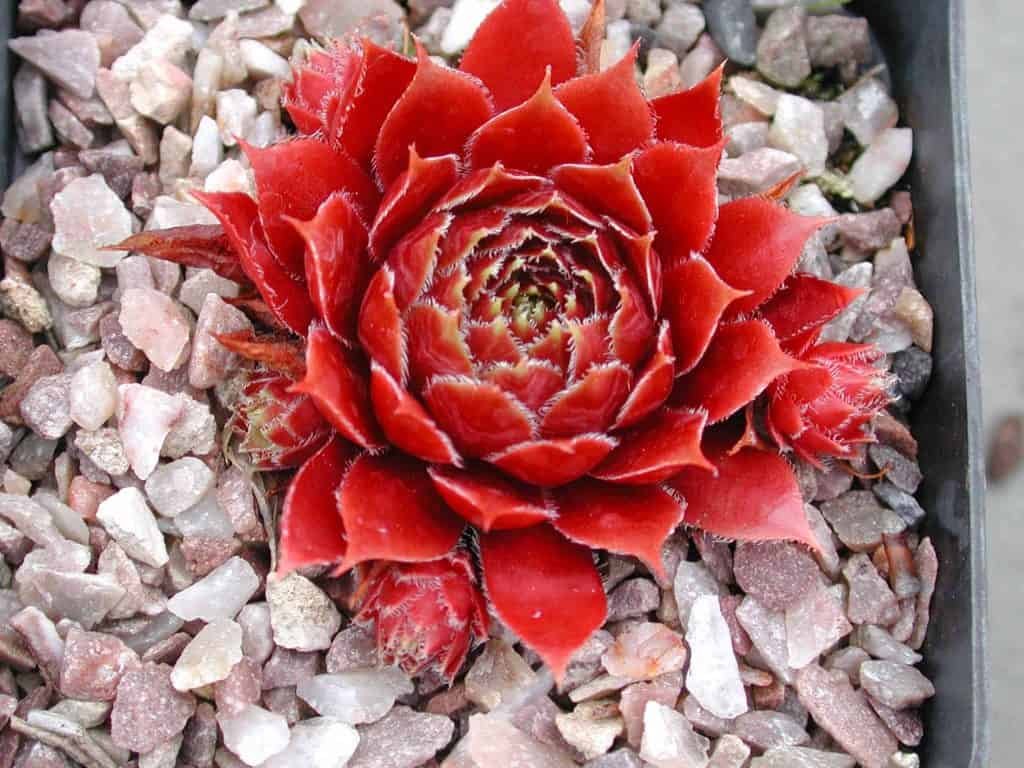Succulents are loved for their unique forms and easy-going nature, but there’s something extra special about rare succulents with red leaves.
These striking plants are more than just a pop of color—they’re living art pieces that thrive with minimal fuss. Whether you’re styling a sunny windowsill or looking to add vibrance to your indoor garden, red succulents bring drama and beauty to any setting.
In this guide, we’ll explore some of the most rare red succulents worth hunting for, what makes them so vibrant, how to care for them, and tips on incorporating them into your home decor.
Whether you’re a new plant parent or a seasoned collector, these succulents with red foliage will leave you inspired.
Why Red Succulents Stand Out
When most people think of succulents, green shades come to mind. But succulents can span a spectrum of colors—from silvery blue to deep purple and fiery crimson.
Red succulents, in particular, stand out for their rich tones and striking contrast in arrangements. So, what gives these plants their unique red hues?
The red coloration typically comes from pigments called anthocyanins, which are produced when the plant experiences stress—usually from full sunlight, drought, or cold temperatures.
While “stress” might sound bad, for succulents, it’s a natural response and often brings out their best colors.
Red succulents tend to:
- Thrive in full sun
- Be drought-tolerant
- Add contrast and texture to arrangements
- Look amazing in minimalist or modern interiors
They’re especially appealing to apartment dwellers and container gardeners who want eye-catching, compact plants that don’t require much upkeep.
Top 10 Rare Succulents with Red Leaves
Let’s dive into ten stunning and hard-to-find succulents that display shades of red—from deep burgundy to scarlet tips. These are the plants that make collectors’ hearts race and home gardens pop.
1. Echeveria ‘Red Velvet’

This fuzzy, velvety-textured Echeveria has thick leaves with rich red coloring, especially under bright sunlight. The rosettes are compact, and the overall effect is bold and elegant.
- Best For: Bright windowsills
- Care Tip: Provide at least 6 hours of sunlight daily to maintain the red hue.
2. Sedum rubrotinctum ‘Aurora’ (Jelly Bean Plant)
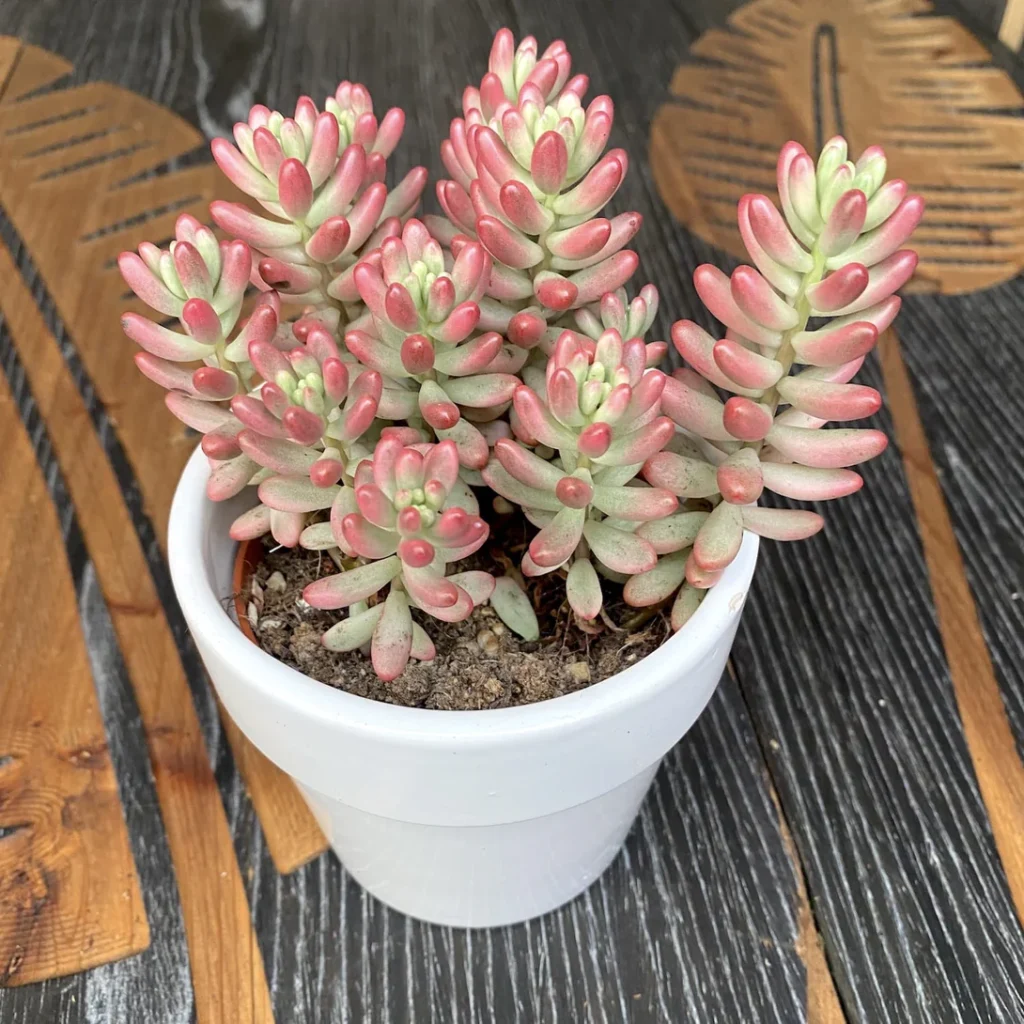
This adorable succulent has plump, jelly bean-like leaves that shift from green to coral red under bright light or when slightly stressed.
- Best For: Hanging pots or shallow containers
- Care Tip: Water sparingly to avoid leaf drop and intensify red coloring.
3. Crassula capitella ‘Campfire’

True to its name, this succulent displays fiery red and orange foliage, particularly during summer or in full sun. The stacked leaf structure gives it a sculptural look.
- Best For: Outdoor patios or warm indoor spaces
- Care Tip: Needs full sun to develop the bright red coloration.
4. Aeonium ‘Cyclops’
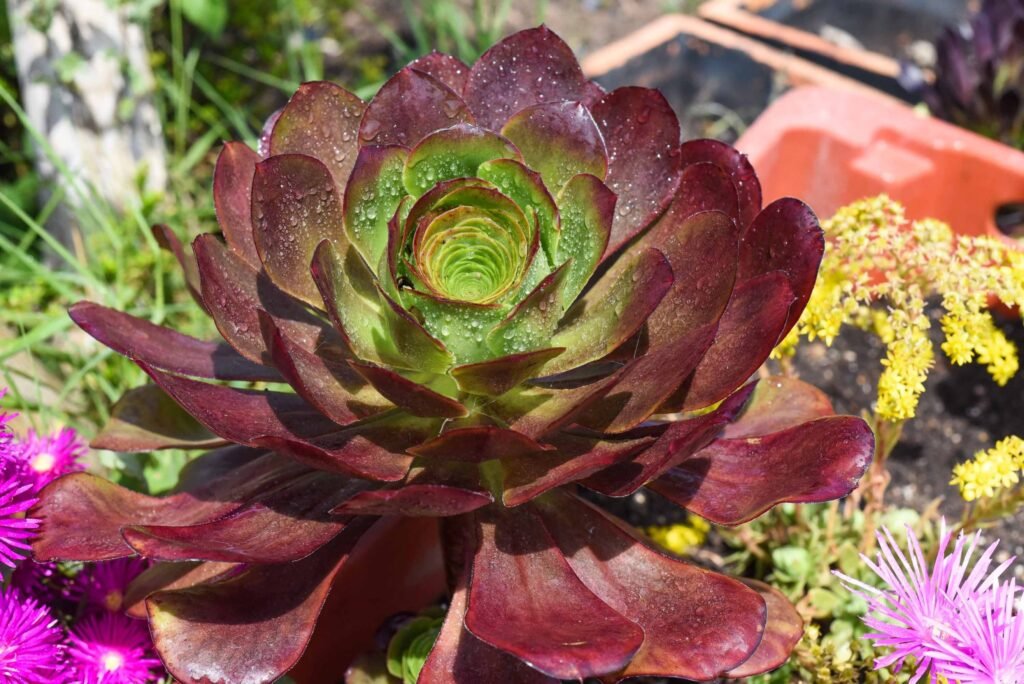
This rare hybrid has huge rosettes with burgundy to red leaves, especially around the outer edges. Its bold color and size make it a statement piece.
- Best For: Large containers or feature pots
- Care Tip: Protect from extreme cold—this one likes it warm.
5. Kalanchoe luciae ‘Flapjack’

Also known as “paddle plant,” its flat, paddle-like leaves flush red around the edges in the right light.
- Best For: Modern, architectural plant arrangements
- Care Tip: Red coloration deepens in winter and when grown outdoors.
6. Echeveria agavoides ‘Lipstick’

This classic beauty forms bright green rosettes with sharply defined red edges—hence the name “Lipstick.”
- Best For: Mixed succulent bowls
- Care Tip: Needs full sun to keep its red tips vibrant.
7. Sempervivum ‘Red Beauty’
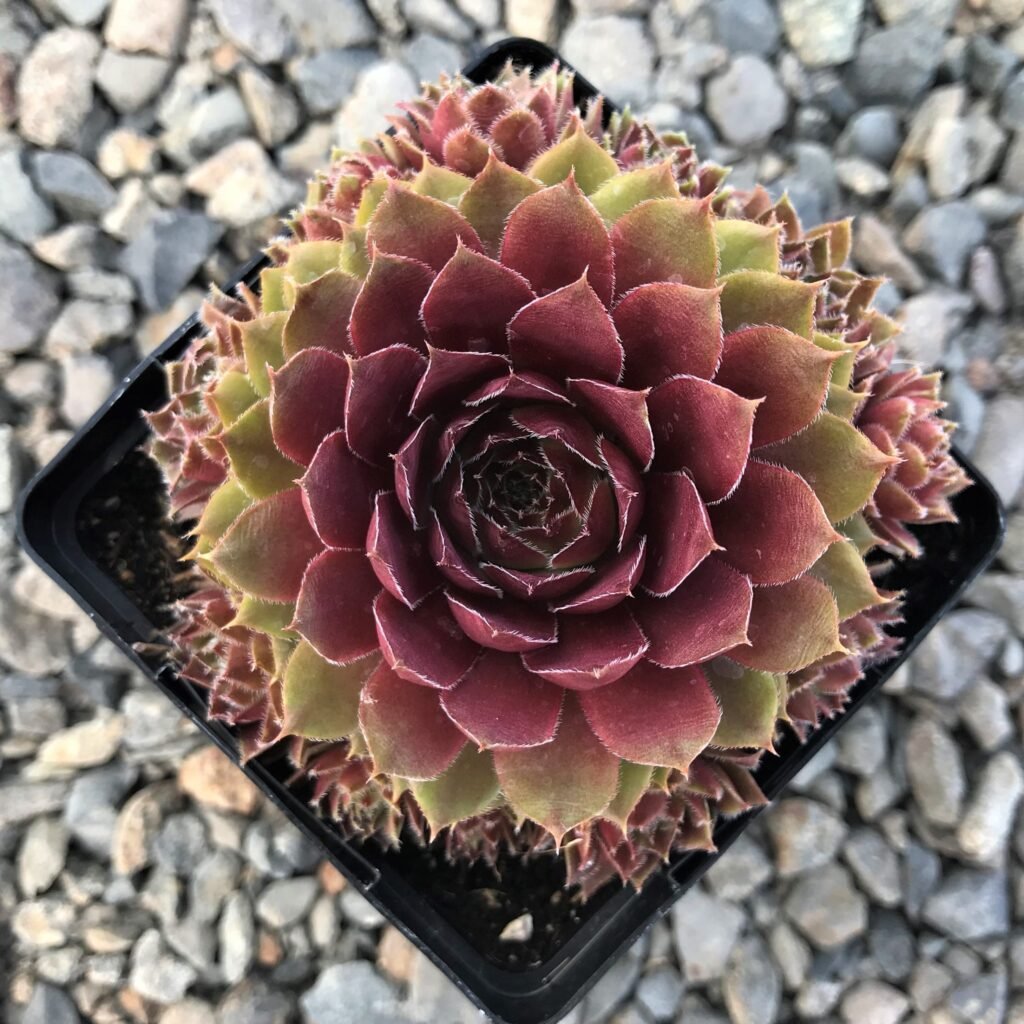
This hardy rosette-forming succulent, also called “hen and chicks,” turns deep red in cooler months or when exposed to full sun.
- Best For: Cold-hardy rock gardens or outdoor containers
- Care Tip: Allow space for pups to spread for a fuller look.
8. Graptopetalum ‘Mirinae’
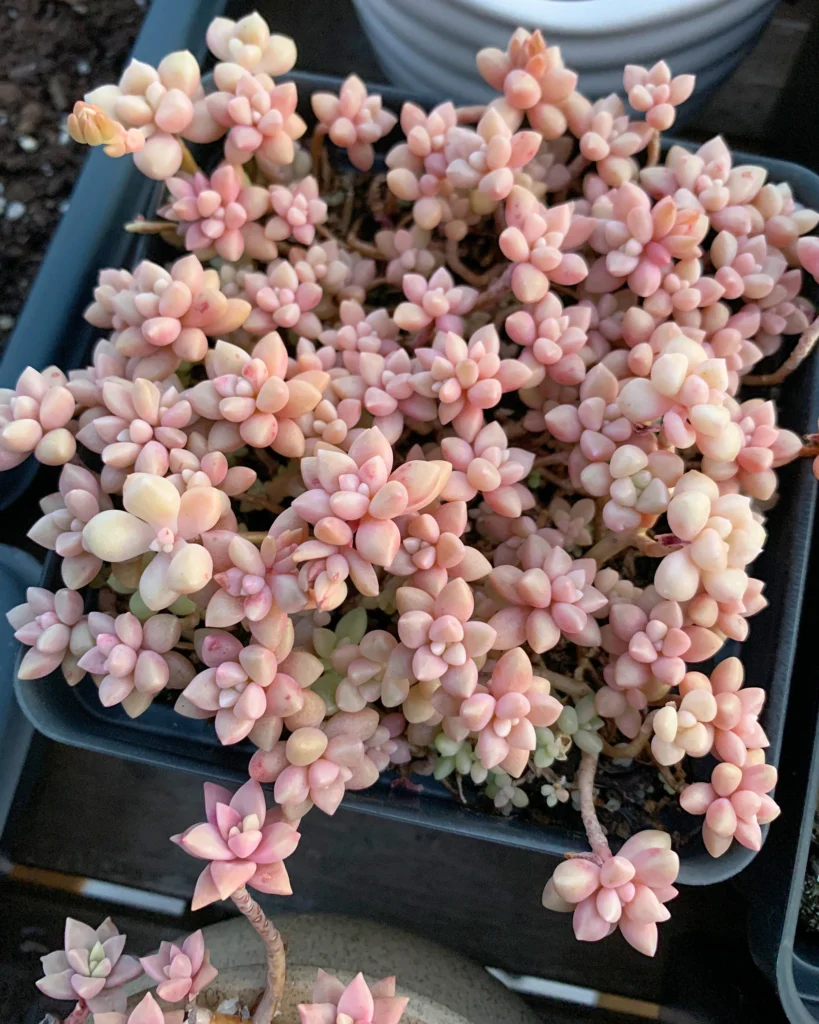
A rare variety with a deep red-pink hue across its compact, layered leaves.
- Best For: Collector displays
- Care Tip: Needs strong light but can tolerate a bit of shade.
9. Aloe ‘Christmas Sleigh’
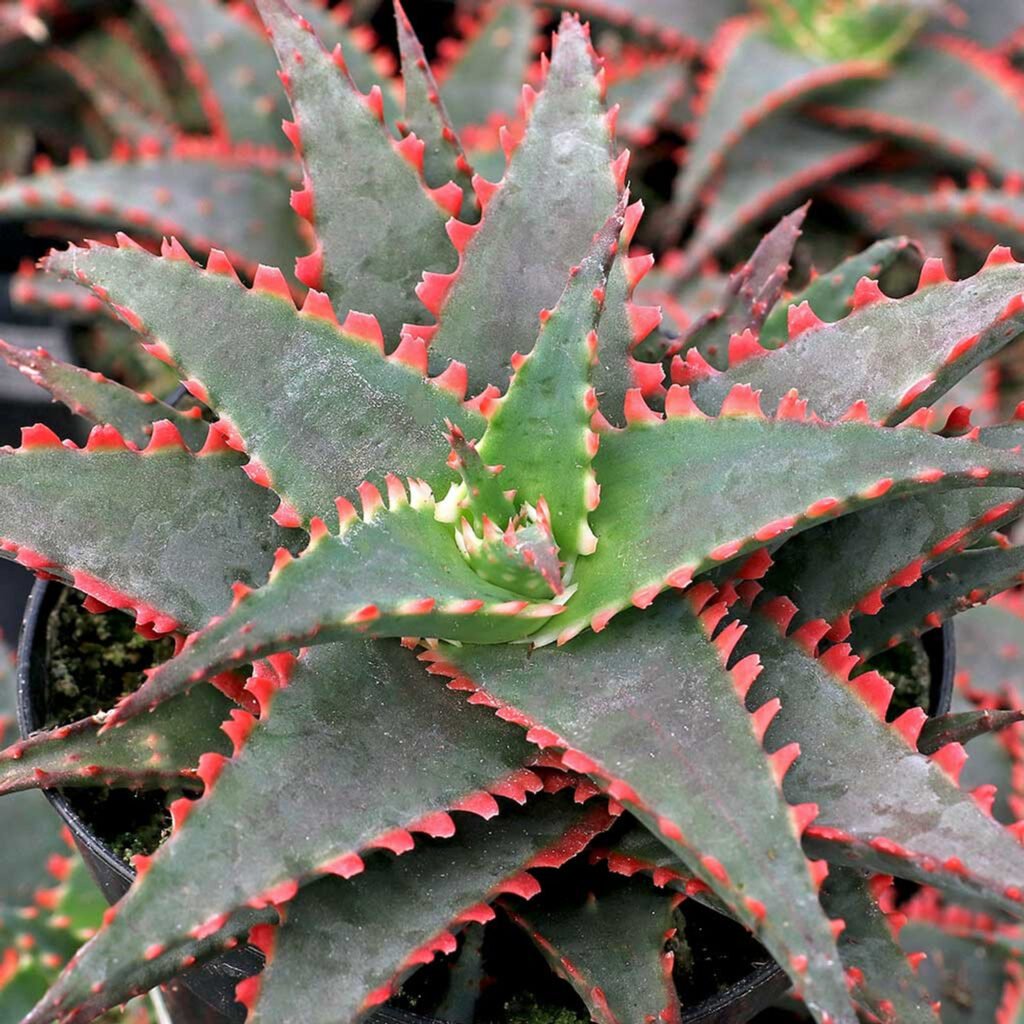
This dwarf aloe species features spiky red margins and green leaves dotted with white. It’s small, fierce-looking, and perfect for small spaces.
- Best For: Desks or tiny planters
- Care Tip: Avoid overwatering; this one’s extra sensitive.
10. Anacampseros rufescens
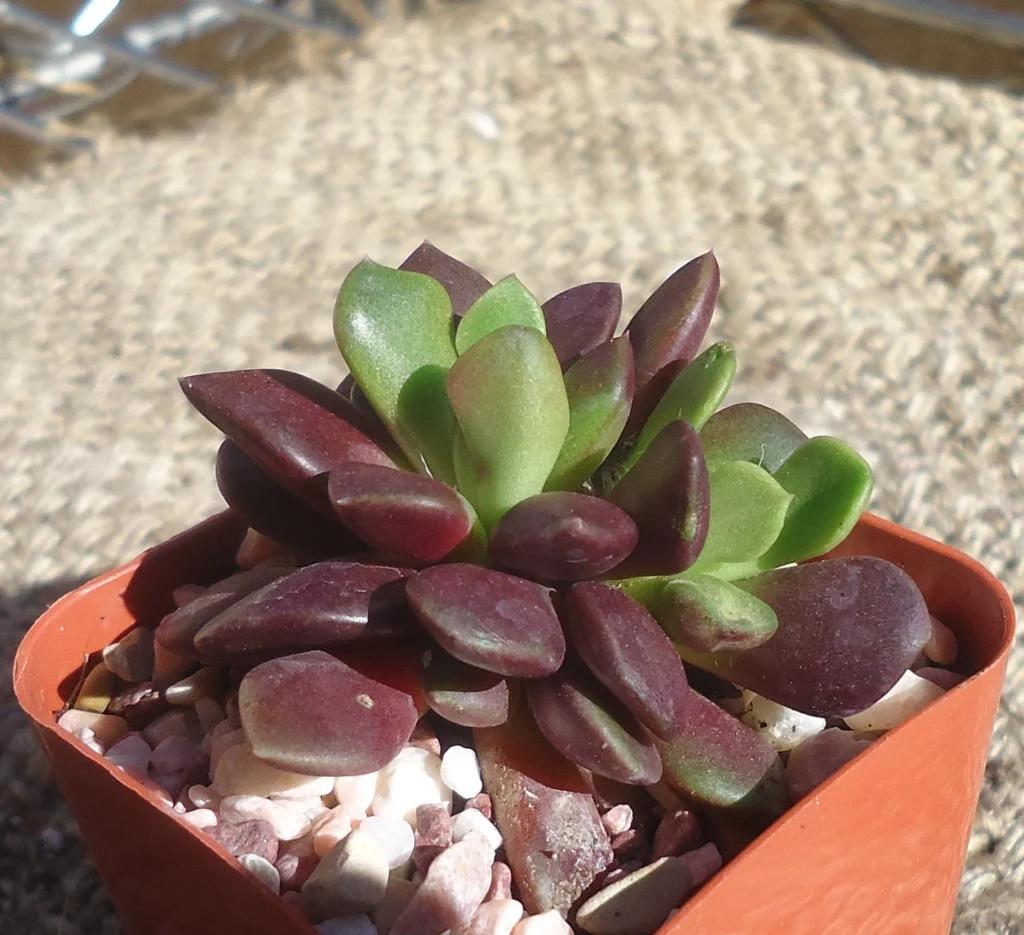
This ground-hugging succulent grows tiny rosettes with purple-green leaves that turn red with enough sunlight.
- Best For: Terrariums or underplanting in arrangements
- Care Tip: Best color achieved in high-light, low-water situations.
Care Tips for Red Leaf Succulents
Caring for succulents with red leaves doesn’t differ much from other succulent types, but getting that color to pop takes some extra effort.
Lighting
Bright light is essential. These plants develop deeper reds when exposed to 6–8 hours of direct or strong indirect sunlight daily. South or west-facing windows are ideal.
If natural light is limited, consider using a grow light to support vibrant foliage.
Watering
Follow the “soak and dry” method. Let the soil dry out completely between watering. Overwatering not only risks rot but also dulls red coloration.
- Tip: Use room temperature water and avoid letting water sit on the leaves.
Soil
A fast-draining cactus or succulent soil mix is key. You can make your own by mixing:
- 2 parts potting soil
- 1 part coarse sand
- 1 part perlite or pumice
Temperature
Most red succulents prefer temperatures between 65–80°F (18–27°C). Some tolerate mild frost (Sempervivum), while others must be brought indoors during cold weather.
Feeding
Feed lightly during the growing season with a diluted succulent fertilizer (low nitrogen). Too much fertilizer can promote green growth over red pigmentation.
Container Tips
Use terracotta pots for breathability and drainage. Make sure your container has holes at the bottom to prevent root rot.
Seasonal Color Changes in Red Succulents
Red succulents don’t always stay red all year. In fact, their coloration changes depending on the season, temperature, light exposure, and watering frequency.
Here’s what to expect:
- Spring & Summer
Most red succulents grow more actively and may appear greener if they’re getting lots of water. To encourage red tones, gradually reduce watering and provide bright, direct light. - Autumn
As temperatures cool, many succulents begin to color up. This is a natural response to seasonal “stress.” - Winter
Some varieties, like Sempervivum or Kalanchoe luciae, turn their deepest red in winter. Cooler temps and less frequent watering enhance the pigments.
If your succulent is green during one season and ruby-red the next, that’s perfectly normal—it’s part of the charm!
Using Red Succulents in Home Decor
Red succulents aren’t just plants—they’re bold accents that bring warmth, contrast, and energy into your home.
Whether you’re working with a spacious living room or a compact apartment, here’s how to make these plants shine indoors:
- Statement Planters
Pair a red succulent like Echeveria ‘Red Velvet’ with a matte white or black ceramic pot. The color contrast makes the red even more eye-catching. - Windowsill Displays
A row of tiny red Sedum rubrotinctum ‘Aurora’ or Anacampseros rufescens along a sunlit windowsill instantly upgrades the space. Add some small stones or crystals for texture. - Terrarium Touch
Miniature red succulents work beautifully in glass terrariums. Just make sure there’s airflow, and use gravel or charcoal at the base for drainage. - Mixed Arrangements
Combine green, blue, and red succulents in one shallow container for a living centerpiece. These arrangements are great for dining tables or coffee tables. - Shelf Styling
Red succulents add a punch of personality when placed next to books, frames, or candles on floating shelves. - Color Themes
If your decor leans toward neutral or monochrome, red succulents act as a natural pop of color that doesn’t feel artificial or overpowering.
You don’t need a green thumb to pull this off—just a little creativity and the right light.
Propagation Tips for Red Succulents
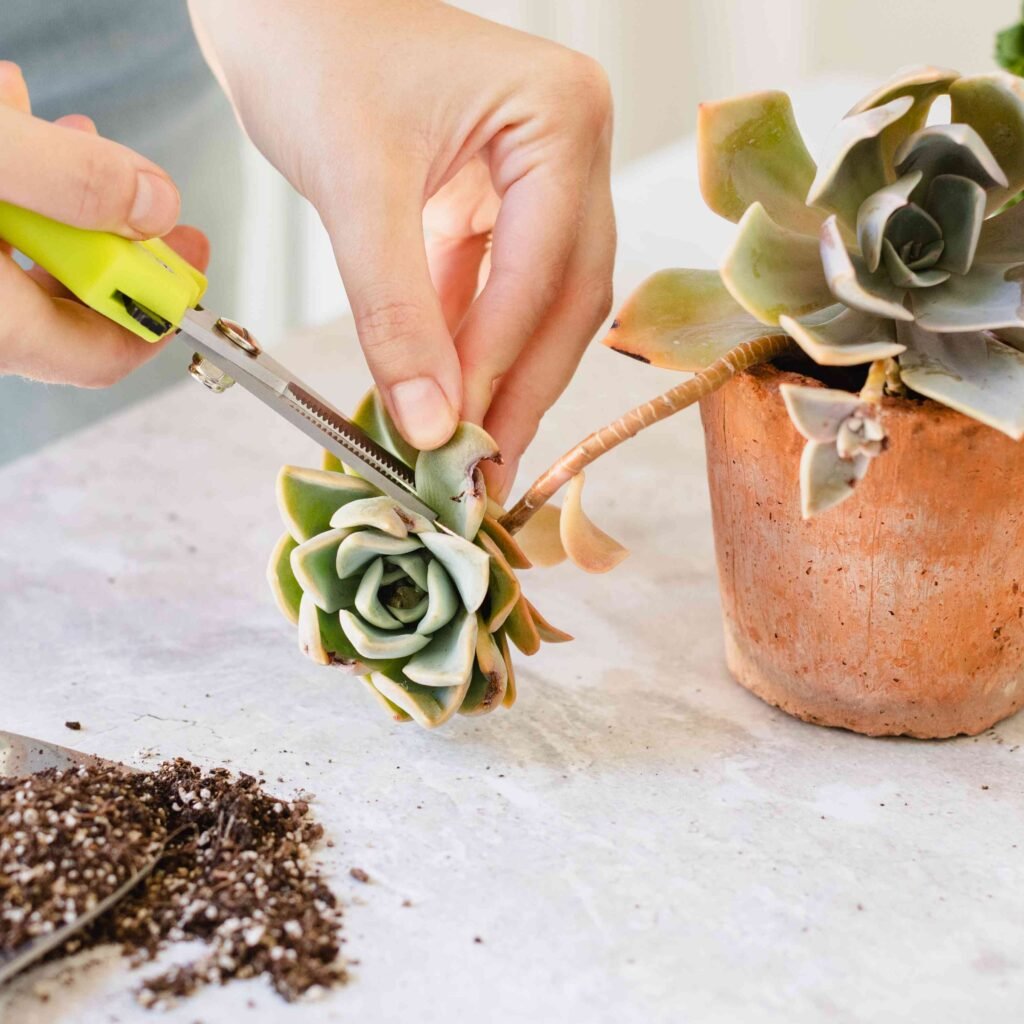
Want to multiply your collection of rare red succulents or share them with friends? Most propagate easily through leaves, offsets, or stem cuttings.
- Leaf Propagation (best for Echeveria, Graptopetalum)
Gently twist off a healthy leaf, let it callous over for 2–3 days, then lay it on well-draining soil. Mist lightly every few days until roots and a new rosette form. - Offsets (great for Sempervivum, Aloe)
Look for baby “pups” around the base of the plant. Remove them gently and replant in a small pot. - Stem Cuttings (ideal for Crassula, Sedum)
Cut a section of the stem with leaves, let it dry for a few days, and then plant it upright in dry soil. Wait a week to water.
Propagating your own rare red succulents can be addicting—it’s budget-friendly, satisfying, and lets you customize your indoor garden.
Common Problems and How to Avoid Them
Even though red succulents are generally easy to care for, they still face a few issues—especially when grown indoors. Understanding these common hiccups can help you keep your vibrant plants healthy and colorful.
1. Color Fading
One of the most common frustrations is when your deep red succulent slowly shifts to a pale green. This usually happens because the plant isn’t getting enough direct sunlight or the right amount of “stress” (like dry spells or cooler temps) that intensifies red pigmentation.
Solution:
Move your plant to a brighter location, such as a sunny windowsill with several hours of light daily. If that’s not possible, use a full-spectrum grow light to mimic natural sunlight.
2. Leggy or Stretched Growth (Etiolation)
Leggy, stretched-out growth—where leaves space out unnaturally and the plant grows tall and spindly—is a classic sign of insufficient light.
Solution:
Rotate your plant regularly to ensure even light exposure and increase light intensity. If you’re growing indoors, especially during winter, a supplemental grow light can make a huge difference.
3. Root Rot
Too much water or poor drainage is a recipe for disaster. Red succulents are especially sensitive to soggy roots, and overwatering can lead to root rot, a condition that’s often fatal if not caught early.
Solution:
Always use a well-draining soil mix and containers with drainage holes. Let the soil completely dry out before watering again. If you suspect rot, gently remove the plant, trim away mushy roots, and repot in dry, fresh soil.
4. Pest Infestations
Even indoors, pests like mealybugs, aphids, or fungus gnats can make an appearance—often hiding between leaves or at the soil line. They can cause discoloration, leaf drop, and stunt growth.
Solution:
Quarantine any new plants before introducing them to your collection to prevent spreading pests.
Use a cotton swab dipped in rubbing alcohol to remove visible pests.
Spray plants with neem oil or an organic insecticidal soap every 7–10 days until the infestation clears.
FAQs
Q1: Why is my red succulent turning green?
It’s likely due to low light. Move the plant to a brighter location or add a grow light. Stress from light helps deepen the red pigment.
Q2: Are red succulents safe for pets?
Most succulents are non-toxic, but some species like Kalanchoe can be toxic to cats and dogs. Always check plant safety if you have pets.
Q3: Can I propagate red succulents easily?
Yes! Many red succulents propagate well from leaf cuttings or offsets. Just let cuttings callous over before planting.
Q4: Do red succulents stay red all year?
Not always. Their color can change with seasons, light exposure, and watering habits. To keep them red, maintain consistent stress conditions like full sun and light drought.
Final Thoughts
Red succulents bring so much more than color—they add character, warmth, and personality to your indoor garden. These bold beauties aren’t just a trend; they’re enduring favorites among collectors and decorators alike.
Whether you’re drawn to their dramatic tones or enjoy the ease of low-maintenance houseplants, rare succulents with red leaves are a fantastic way to elevate your green space.
Start with one, and you may find yourself hooked on these fiery little wonders.
